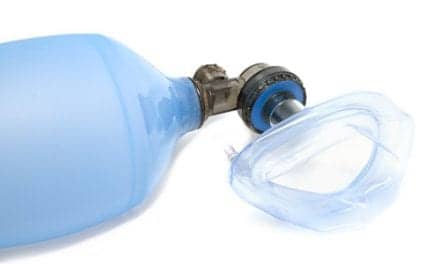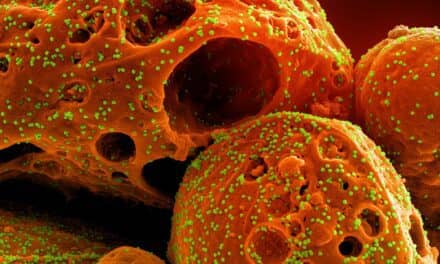National Jewish Health has earned a reputation for excellence in respiratory care.
By Danielle Cohen
Since opening its doors in 1899, National Jewish Health in Denver has been renowned and has received recognition for its treatment and research in respiratory care.
For 8 consecutive years, the annual Best Hospitals edition of US News & World Report has listed the institution as the number one facility in the country for excellence in treating respiratory disorders, and first in reputation among pulmonary specialists.
Now the only medical and research center in the country dedicated entirely to respiratory, allergic, and immune system diseases and disorders, National Jewish Health actually started as a residential tuberculosis (TB) sanitarium.
“The pristine mountain air was felt to be good for TB, so a number of the hospitals that were within this area were actually started as TB sanitariums. People would come from all over the country and undergo the traditional rest and recuperation before we had better therapies for TB,” says Gary Cott, MD, executive vice president for medical and clinical services.

Although a nonsectarian facility from the beginning, National Jewish Health was started and supported by Jewish philanthropy as a facility that provided care free of charge—a practice continued until the late 1960s, although service is still offered on a sliding-scale basis whenever possible.
In the 1970s, the facility merged with a national residential center for severely asthmatic children to form the current institution. National Jewish Health is now an independent, nonprofit institution affiliated with the University of Colorado’s Health Science Center. The institution comprises a number of buildings, encompassing about two and a half square blocks.
While it still has inpatient capabilities for select specialties, National Jewish Health is now largely an outpatient center. About 30% to 40% of the patients come from out of state, with the rest from the surrounding region.
The clinics on site are visited by about 20,000 to 25,000 pediatric and adult pulmonary and nonpulmonary patients annually, including multiple visits by an individual patient. Patients’ lengths of stay depend on their illnesses and issues associated with them. Out-of-area patients usually stay about 4 to 7 days.
“We look at whole-person issues,” Cott says. “Hopefully, by the time patients have left, it’s not just that they’ve come in and found a different pill to take. They have a better idea that they’re not funny, unique, or weird; that there is a way to treat this, what to watch for, how to deal with it, and understanding their medications. It’s fairly comprehensive.
“It doesn’t mean that every person who walks through the door is going to see five specialists and four paraprofessionals or other people. We tailor it for what the individual’s needs appear to be, but it’s clear that to succeed we have to deal with the whole person, not just find a different pill for them to take, and with chronic illnesses, that’s the key,” he says.
In the area of respiratory care, after years of dedication to TB cases, National Jewish Health has expanded its work to include the treatment of, and research and education on, other respiratory disorders, including asthma, chronic obstructive pulmonary disease (COPD), multiple interstitial lung diseases, idiopathic fibrotic diseases, and allergy-related breathing disorders.
George Zeman, RRT, CPFT, director of pulmonary physiology and respiratory care, says it is the “in-depth and original diagnostic testing” that sets National Jewish Health’s respiratory care apart from what is offered at other facilities.
“We do the routine pulmonary diagnostics that we offer in-depth, and then there are some that we do that are not typical in any community hospital, and very few university hospitals,” Zeman says.
Among the testing offered in the pulmonary physiology unit are rhinometry, during which an ultrasound-like device is used to evaluate the anatomy of the nasal cavities; pharyngometry, which uses the same procedure for the throat; and exhaled nitric oxide, which checks airway inflammation.
While some of the diagnostic tests performed at National Jewish Health are also available elsewhere, some of the methodology is not, including the use of impulse oscillometry and methacholine challenge testing. Both tests are widely performed on adults and children, but not on very young children and infants—something that is done at National Jewish Health.
The institution also takes a unique approach to measuring pressure volume curves by placing an esophageal balloon through the nose into the esophagus to measure the intrapulmonary pressures; and to cardiopulmonary exercise testing, during which an indwelling arterial line is used to draw arterial blood at baseline and throughout the test.
National Jewish Health has also set itself apart from other respiratory care facilities by the programs and services it offers.
The institution has various day programs, through which patients come to the facility for an extended visit as outpatients. They spend much of their day in the facility, but do not stay overnight.
The center’s Environmental Lung Center and the Division of Environmental and Occupational Health Sciences focus their efforts on environmentally and occupationally induced illnesses, such as black lung disease. Research in this area includes hypersensitivity pneumonitis, sarcoidosis, and defining beryllium-associated pulmonary disease.
The environmental exposure chamber—a large Plexiglas room with a chamber and an antichamber—tests patients’ breathing reactions to certain elements, including cigarette smoke, perfume, latex, and ammonia.
“We can expose people to environmental factors that may have or that they perceive have caused them breathing problems or disability … and gauge their reactions,” Zeman says. “We can spend all day exposing them to unique (triggers).”
Also on the property is the Kunsberg School, a kindergarten through eighth grade public school dedicated to educating children who are failing in other school environments due to the severity of their respiratory illness. About 75 children attend the school.
“These are kids who have been in the hospital multiple times, or have bad asthma, and they’re missing lots of school. So we take a dual role to [help them] catch up on their education, work with their illness, get them prepared to go back into the system,” Cott says.
National Jewish Health also staffs a toll-free number, the Lung Line, to answer questions from and about individuals with respiratory disorders.
“We can refer them to the appropriate resource or our Web site or the appropriate expert here. Physicians and/or patients can also use it for a referral to be evaluated and treated here. It’s kind of the first prescreening so we can decide how to route them in our system,” Zeman says.
The Lung Line was established several years ago and is available to people around the world.
“There were a lot of people with questions—this was before the Internet became a popular tool—about respiratory [issues] who had nowhere to turn,” Cott says. “We started offering a free service to talk to respiratory nurses if they had questions relating to pulmonary disorders. We would field tens of thousands of calls a year from people all over the country who just had questions.
“As we became known to have a phone center for health information, we were one of the first places to develop programs in asthma disease management. We have a whole group that’s dedicated to helping insurers and other health care providers have telephonic and other systems to manage large populations of asthma patients in a traditional disease management way,” Cott says, adding that they are also involved in disease management in other areas, such as COPD.
Of the roughly 1,200 employees at the institution—physicians, nurses, therapists, and administrative employees—about half are dedicated to clinical activities, and the other half to research.
“There’s a great deal of collegial types of activities. Certain events occur in multi-areas across the institution, and I think … a strength of our institution [is] the ability to do those kinds of [activities],” Cott says. “Like all research institutions, we do everything from drug-based studies to basic cellular biology to molecular biology to physiologic assessments of patients. It covers the gamut. There’s a host of endeavors here that are moving forward in a different way than they’ve been done before.”
Zeman says National Jewish Health’s niche focus makes it “the specialist of the specialists.”
“We see patients with numerous co-morbidities—multiple problems besides their lung problems—and our physicians end up having to treat some of these co-morbidities. I think it’s a definite advantage that we are so focused because many times patients were treated in another area of the country and they’re sent here to really find out the final and appropriate diagnosis. A lot of referrals we get are because the treatment is not effective for their disease that someone has diagnosed,” he says. “We get some of the more difficult cases that are not purely black-and-white on what their disease is and how to treat it.”
That same niche focus can pose more of a challenge in some areas than that experienced by other healthcare facilities, including financially, Cott says.
“Our strengths—that we have great expertise within a given area of medicine and that we’re small—can sometimes also be our weaknesses,” he says. “The nice thing about being a small group is that we’re very collegial in what we do here, and that extends to clinical, research, nursing, all the way through.
“What makes us unique is, from the physicians through the rest of the staff, an interest in trying to be accurate about what it is we’re working with, and then work with the whole-patient concept,” Cott says.
RT
Danielle Cohen is a staff writer for RT.









